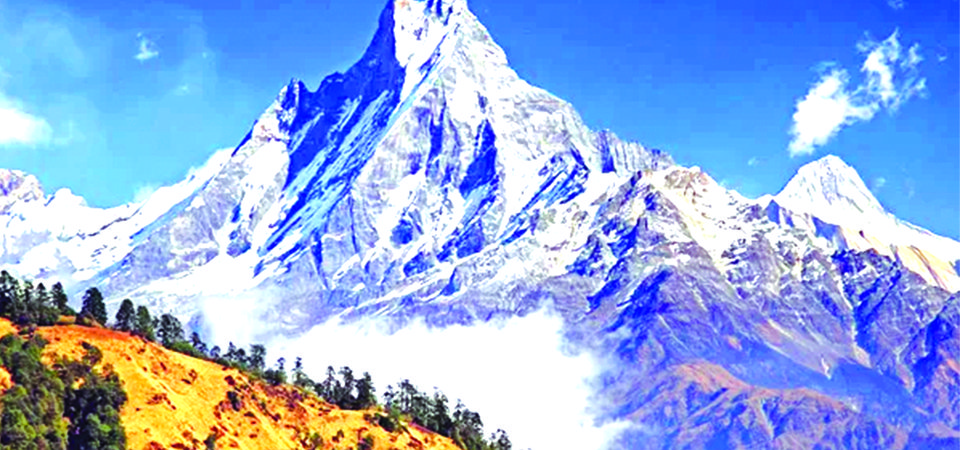Climate change decreases snow levels of Himalayas

By TRN Online, Kathmandu, Mar. 23: World Meteorological Day is being observed today under the official slogan 'the ocean, our climate, and weather.'
On the occasion of this day, the former director-general of the Department of Hydrology and Meteorology and senior scientist Dr Madan Lal Shrestha said that because of the emission of greenhouse gases, the temperature of the earth is rising.
According to the World Meteorological Organization, 2020 was marked to be the hottest year globally, according to global warming standards from 1850-1900.
It has been estimated that there has been a rise of 0.1 degrees to 1.2 degrees Celsius in different parts of the world this year on the basis of the previous rise in temperature.
According to Dr Indira Kandel, a senior meteorologist at the Department of Hydrology and Metrology, it does not rain until the seawater evaporates, and that has a direct impact on the global climate. As a result, irregularities in weather are observed which in turn affect human lives as well.
Dr Kandel said, “The ozone layer is being exhausting because of the global climate change and pollution. Along with this, the direct impact because of the global climate change have been observed such as decrement in snow level and rise in the sea level.”
Climate has no boundaries so does the effect of it, so there should be a serious concern in this regard. The effort of such concern was the establishment of the World Meteorological Organization (WMO) in 1950 which aims to understand the state of global weather.
Weather Day has been celebrated since March 23, 1961. As soon as Nepal became a member of the organization, measurement centres were established. After Nepal became a member in 1966.
The department has also started giving advance notice to manage various natural calamities and flights. Nepal is facing the challenge of high technology, skilled manpower, and maintenance.
Meteorologist Kandel points out that the recent weather cycle is changing the weather and climate of the world including Nepal. Weather change refers to the short-term environmental condition, whereas, climate change is to seasonal change over 10 years.
According to her, Nepal's weather and climate have changed more than in the past. Earlier, the surface was cold and humid for a long time due to continuous drizzle, but now there are times of heavy rains and drought.
Nepal has been witnessing natural calamities such as floods, landslides, lightning, and hurricanes due to heavy rains and droughts invited by climate change.
Recent News

Do not make expressions casting dout on election: EC
14 Apr, 2022
CM Bhatta says may New Year 2079 BS inspire positive thinking
14 Apr, 2022
Three new cases, 44 recoveries in 24 hours
14 Apr, 2022
689 climbers of 84 teams so far acquire permits for climbing various peaks this spring season
14 Apr, 2022
How the rising cost of living crisis is impacting Nepal
14 Apr, 2022
US military confirms an interstellar meteor collided with Earth
14 Apr, 2022
Valneva Covid vaccine approved for use in UK
14 Apr, 2022
Chair Prachanda highlights need of unity among Maoist, Communist forces
14 Apr, 2022
Ranbir Kapoor and Alia Bhatt: Bollywood toasts star couple on wedding
14 Apr, 2022
President Bhandari confers decorations (Photo Feature)
14 Apr, 2022










